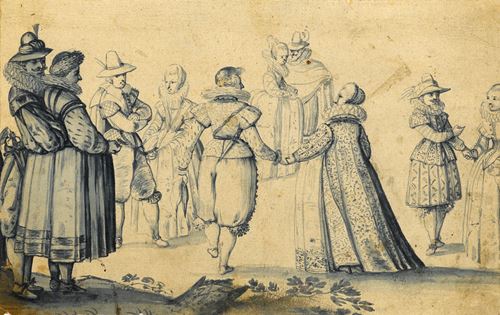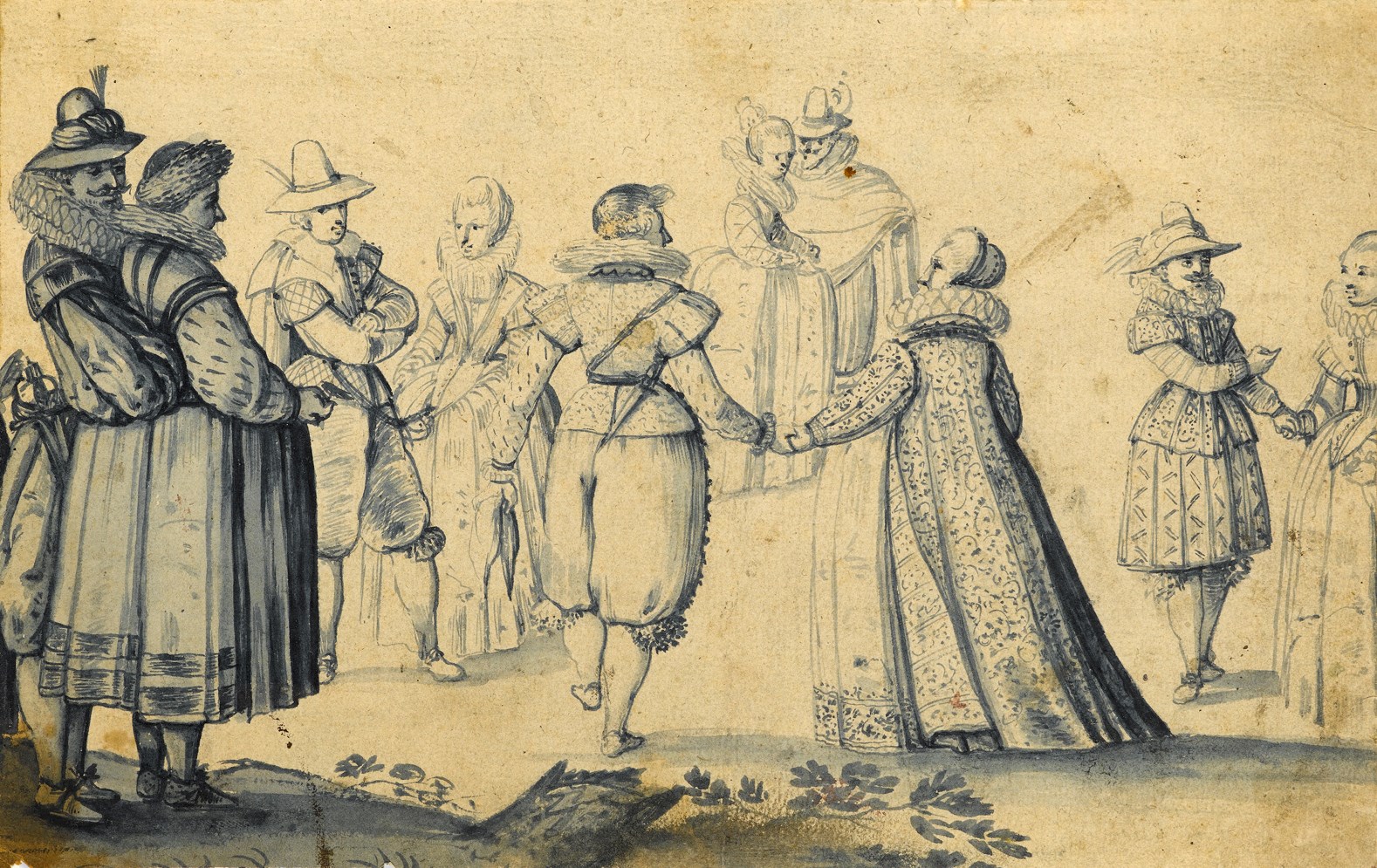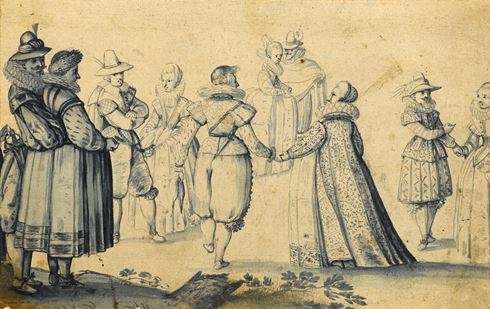
Louis de CAULLERY
Caulery 1580 - Antwerp 1621
Biography
Active for a relatively brief career of less than twenty years, Louis de Caullery remains relatively little known among Flemish painters of the 17th century. Born around 1580 in the Flemish town of Caulery, on the Scheldt river, not far from Cambrai, he was trained in the studio of Joos de Momper. By 1602 he is recorded as a master at the Antwerp painter’s guild. He died in 1621, at the age of thirty-seven.
While De Caullery is best known for his paintings, which are characterized by multifigural compositions and often set in elaborate architectural surroundings, his draughtsmanship has remained less studied until recently. His drawings have often been confused with those of the so-called ‘Master of the Hermitage Sketchbook’, who may have worked in Antwerp at the same time. The drawings of this as yet unidentified artist, who was probably Flemish, are exemplified by a number of genre scenes in an album in the Hermitage in St. Petersburg, while other drawings by the same hand are today in Berlin, Darmstadt, Düsseldorf, Leiden, Moscow and Munich. The ‘Master of the Hermitage Sketchbook’ has in the past been variously identified as Denys van Alsloot (c.1570-c.1627), David Vinckboons (1576-1629) and, more recently, Louis de Caullery. However, as one scholar has recently pointed out, only a small number of the drawings generally given to the Master may in fact be reasonably attributed to Louis de Caullery.


